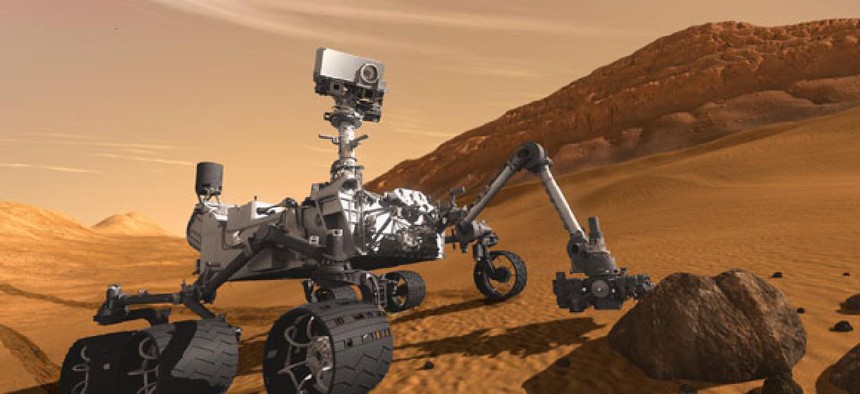Photo Gallery: Curiosity approaches Mars

NASA illustration
Rover will inspect Mars' environment for minerals, gases and water.
This weekend, NASA will get its first returns on a very expensive gamble. Launched in November by the Mars Science Laboratory, the “robotic geochemist” known as Curiosity is approaching the red planet at a speed of 8,000 miles per hour with the goal of touching down in Mars' Gale Crater in the early morning of Monday, Aug. 6.
The rover’s mission -- a joint operation between NASA and its commercial space partner, the United Launch Alliance – is to answer the scientific questions NASA has been exploring for years, focusing on the Mars environment's makeup. Curiosity will use a laser to look inside rocks to analyze gasses and minerals, sending the data back to Earth.
NASA has been struggling to keep its budget and define its relevance with the end of the space shuttle program this past summer. It escaped big cuts in the latest round of appropriations in Congress but is under pressure to perform.
Curiosity's mission will look to answer the wider question of the future of space exploration for NASA. Going forward, the space agency is relying on public-private partnerships as a means to back flights like Curiosity's $2.5 billion mission. If successful, NASA will attempt similar missions.
Unlike previous rovers, Curiosity will be lowered by cable onto Mars, using what NASA calls a sky crane maneuver. Spirit and Opportunity were lowered using airbag-type systems, but Curiosity's weight -- it weighs about the same as a Mini Cooper -- makes such a landing impossible. John M. Grunsfeld, NASA’s associate administrator in charge of the science mission directorate, told the New York Times that the landing will be the “hardest NASA robotic mission ever attempted." If it touches down successfully, Curiosity's mission will last more than the six years Spirit and Opportunity logged.
"[The mission] will go longer. It will discover more than we could ever possibly imagine," Colleen Hartman, assistant associate administrator, NASA Science Mission Directorate, said in November..
NASA has an array of images depicting the preparations and launch of the Mars Science Laboratory, some of which are shown here.






